12 Nights / 13 Days
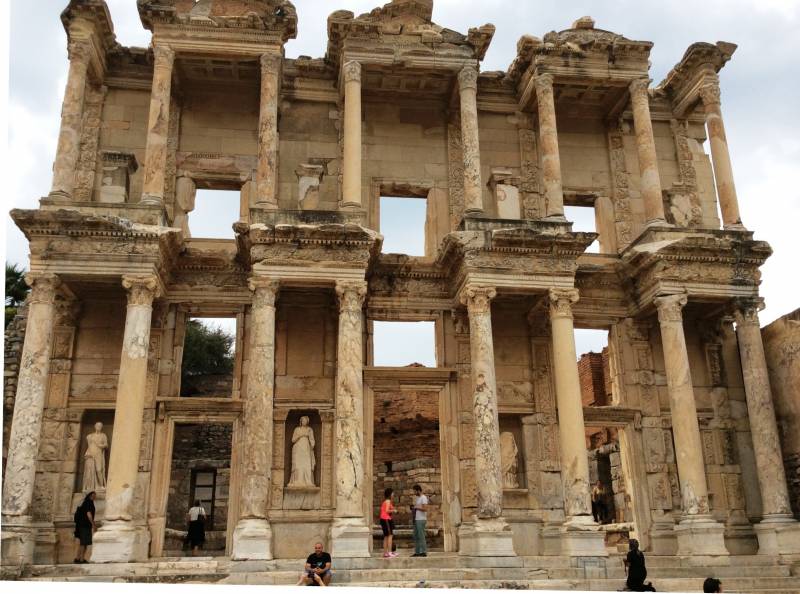
Arriving Kayseri via Istanbul. Meet and greet at the airport and transfer to your Cave Hotel in Cappadocia. A welcome dinner will be served at a well known Cave Restaurant. Overnight in Cappadocia.
After breakfast we will start exploring the Christian history and the breathtaking scenery of Cappadocia, land of unique landscapes and the unusual rock formations to see the carved underground dwellings, intriguing fairy chimneys of “Goreme Open Air Museum” for which the region is renowned with, and the churches lavishly decorated with frescoes. Many early Christian communities lived and worshipped deep in the rocks and crags, leaving their frescoes and paintings to be marvelled at centuries later. As empires waxed and waned, from the Assyrians and Hittites through to the Roman and the Byzantine empires, they left evidence of their passing. Almost 2,000 years ago, Christians carved their first churches into these rocks and ‘chimneys’ and earlier civilisations excavated huge underground cities, with ventilation systems, kitchens and housing for livestock as places of sanctuary against troubled times.
Continue to visit monastic Zelve Valley and the Underground City of Kaymakli. Lunch will be served in a nice local restaurant. Then, we will visit a local Pottery Shop for a demonstration and then try your own hand at the potter’s wheel. Overnight in Cappadocia.
Early departure to Konya and stop on the way to Silk Road at the 12th century Seljuk Caravanserai. Trade across Turkey in medieval Seljuk times was dependent on camel trains which stopped by night in inns known as kervansaray or caravanserai , literally 'caravan palaces'. These buildings provided accommodation and other amenities for the merchants and stabling for their animals. Lunch en route. Continue to visit Listra, where Paul preached on his first missionary journey (Acts 14: 6-22). Nearly two thousand years ago, Paul and Barnabas visited Iconium during Paul’s first missionary journey. As he preached to the city, God used Paul to bring many Jews and Gentiles to Christ (Acts 14: 1-6). We will also visit the excavations of Catalhoyuk.
Paul and Barnabas arrived in Konya by following the Eastern Trade Route and the King's Road through Ilgin- Ladik. Konya was a place in which they made many moving speeches and where they succeeded in converting many people to Christianity. The most important of these people was St. Thecla who was much affected by Paul's sermons and went on to become one of Christianity's foremost missionaries. She was the first female martyr. While one group supported Paul, there was another group set against him. When Paul heard that the other group were thinking to assault them, Paul and Barnabas escaped from Konya to go to Lystra and Derbe.
Overnight in Konya.
Konya is also the home of the Mystic sect of the spectral Whirling Dervishes. We’ll have an opportunity to learn more about this mysterious order when we visit the museum of its founder, Mevlana, who is also known as the poet Rumi. We will continue to Pisidian Antioch, one of important stops on Paul’s missionary journeys. It was here that St.Paul changed world history by opening Christianity to the pagan world. Although only %10 of Pisidian Antioch has been excavated, the ruins from the Roman period are noteworthy. We will see Septimus Severus’ triumphal gate, Augustus’ Temple, the Roman baths, a theatre and a church dedicated to Paul.
Overnight in Konya.
Early departure route through the coastal mountains will bring new understanding of the rugged terrain that Paul traveled on his missionary journeys in route to the bustling, palm-lined streets of Antalya. Founded on the “Turquoise Coast” of the Mediterranean, Antalya has boasted a mild climate and beautiful beaches and harbours for centuries. In fact, Paul and Barnabas sailed from Antalya harbour in the 1st Century on the first missionary journey. Today, we’ll visit the best preserved Roman Theatre in the world in Aspendos and the neighbouring town of Perge. It was in Perge that John Mark decided to part company with Paul and Barnabas, while they continued on their missionary journey. Ruins of the city’s streets, baths, gates and theatre are still visible. We also visit historic Antalya Harbour and Hadrian’s Gate.
Overnight in Antalya.
After breakfast, depart for a leisurely trip along the beautiful coastline to Demre (ancient Myra) to visit the 11th Century Church of St. Nicholas. The church was built to commemorate an early Christian bishop who was present at the First Ecumenical Council and eventually became known as Santa Claus. It is interesting to hear our guide speak of how time has turned this early church father into a mythical hero. To view the red and white statue of Santa Claus standing in the square, see the Muslim vendors peddling statues (idols to their thinking) and hear the call to prayer from the nearby mosque is strangely bizarre. In Myra we will also visit the port where Paul and Luke changed ships en route to Rome. As the Myra of today is the sailing center of the Anatolia region, It is very interesting to see the many wooden boats lined up as it would have been in Paul's day. Continue for Pamukkale. Overnight at a Thermal Hotel in Pamukkale. (enjoy the spa of your Hotel).
Hierapolis, meaning "Sacred City," was an ancient center for pagan cults until it was transformed into a Christian center in the first century. According to tradition, the Apostle Philip lived and was martyred in Hierapolis. It was the likely the hot springs of Hierapolis in contrast to the cold mountain springs near Colossae that combined to bring application to the "luke warm" Laodiceans. (Rev 3:14-22) This connection between the cities lies behind Paul’s reference to Hierapolis and Laodicea in his epistle to the Colossians (Col 4:13). Colossae is well-known throughout Christian circles as the receiver of Paul's letter to the Colossians. Today, the town has fallen into obscurity and nothing remains. Laodicea contains many acres of ruins to visit including a stadium and remnants of a sophisticated water system.
Enjoy touring the beautiful snow, white ‘frozen waterfalls’ baths, theatre, main streets, gates and Necropolis. Overnight in Pamukkale.
Philadelphia was referred to as the "New Jerusalem" (Rev. 3:7-13) in the Book of Revelation, yet today, not much is left of the city except for the ancient wall and the remains of a Byzantine basilica in the modern city of Alasehir. Sardis was berated by John for its facade of strength when in reality; it was weak (Rev. 3:1-6). Here coins were minted and the dyeing of wood originated. We'll visit the gymnasium and synagogue. A stop will be made in Thyatira to view the ancient roadway and period columns. Izmir is the third largest city in Turkey and a long time center for Jews and Christians. In Paul's day, Izmir was known as Smyrna and was another of the Seven Churches (Rev. 2:8-11). Here we'll see Polycarp's Church and the ancient agora.
Overnight in Izmir.
In the morning, departure for the House of Virgin Mary. The belief that the Virgin Mary had spend her last days in a house in the vicinity of Ephesus and that she had died there, focused attention on a nun named Anna Catherina Emmerich who had lived in the late 18th century. The efforts to find the house were greatly influenced by her detailed description of the Mary’s coming to Ephesus, her life and her last home there. After the visit, drive to Ephesus Antique Site, one of the best-preserved cities of antiquity, where St.Paul preached. A large and impor- tant city one the west coast of Asia Minor where Apostle Paul founded a church. The history of Christianity at Ephesus began probably about AD 50, perhaps as a result of the Priscilla and Aquila. During his stay in Ephesus, Paul encountered both great opportunities and great dangers. He baptized believers who apparently came to know the gospel through disciples of John the Baptist (Acts 19:1–5) and he countered the strong influence of magic in Ephesus (Acts 19:11–20).
Besides its importance in the Christian history, Ephesus is the best preserved of the Antique cities in Asia Mi- nor. The Grand Theater with 24,000-seat capacity, where St. Paul preached, the Trajan Fountain, the Temple of Hadrian, famous Street of Curetes and Celsus Library are among antique beauties to be seen during the visit to Ephesus Antique site. Many traditions testify that the Apostle John lived in Ephesus toward the end of the first century. In his vision from the Island of Patmos off the coast of Asia Minor, John described the church of Ephesus as flourishing, although it was troubled with false and had lost its first love (Rev 2:1–7). In the 6th century AD the Roman Em- peror Justinian raised a magnificent church to John’s memory in this city. Lunch will be served at a nice local restaurant in the area. The day will not be complete without a visit to a local Turkish Rug cooperative. Overnight in Izmir.
Visit the ruins of great city of Pergamon, a center of education and the arts, which possessed one of the greatest libraries of antiquity. The church of Pergamon was praised for its forbearance (Rev. 2:12-17). It was here that the first Christians were executed by Rome. Not far from Pergamon’s Acropolis are the ruins of Asclepion, one of the foremost medical centers of classical times. Continue to the Archaeological Museum and the Red Court. The Red Court (Red Basilica) at the edge of the present day Bergama was probably a temple dedicated in the 2nd C AD to Serapis maybe also to Isis and Harpocrates. Later, in Byzantine Era, it was converted into a basilica and the central part was used as a church. Then we will proceed for Alexandria Troas where St.Paul preached and he put his robe on the child Ithicus who fell from the building and said to him, ”child, there is still life in you”. Alexandria Troas (Alexandria of the Troad) is an ancient Greek city on the coast south of Troy. It was founded by Antigonos and Lysimachos on the instructions of Alexander the Great and flourished during the Hellenistic and Roman periods. Alexandria Troas is situated on the Aegean coast in nearly the middle of west Turkey. It is located in the modern Turkish province of Canakkale. According to the Catholic Encyclopedia, this site was first called Sigia, perhaps about 310 BC. Antigonus refounded the city as Antigonia Troas. Early in the next century the name was changed by Lysimachus to Alexandria Troas, in memory of Alexander III of Macedon. Investigations led by Elmar Schwertheim have been conducted at this site since 1993. Alexandria Troas is very close to the Troy ancient site. Overnight in Canakkale.
In the morning, visit Troy, the legendary city of Homeros and Alexandria. Troy is a city which existed for over 4,000 years and is known as the center of ancient civilizations. For many years people believed that it was a city mentioned only in tales and never actually existed until it was first found in the 19th century. Troy ("Truva" or "Troya" in Turkish) is located at Hisarlik hill near the village of Tevfikiye in Canakkale province, where the remains of this once-great city can be visited. What is left are the remains from the destructive dig carried out by Schliemann, the famous German would-be archaeologist or "treasure hunter" as some people call him. Today, an international team of German and American archaeologists bring the Troy of the Bronze Age back to life under a sponsored project. A Turkish legal team is work negotiating with Russia and Germany to retrieve the stolen Trojan treasures. Lunch en route.
After lunch, drive to Istanbul crossing Dardanelles on a ferry. Arrive Istanbul and visit St Sophia Church, (built in 6th century, once was the largest Christian Church in the world).
Overnight in Istanbul.
Today, we will begin Istanbul with a visit to the Ancient Hippodrome, which was one of the largest chariot race grounds of the Byzantine Empire. You will take a short walk to the Blue Mosque, completed in 1616, ıt is a triumph of harmony, proportion and elegance. The mosque was a part of a complex also including, tombs, fountains, kitchens, and a bath. Its colourful 260 windows enables the sunlight to reach inside. This makes the interior unusually light. The blue Iznik tiles covering the walls have given the mosque its popular name, Blue Mosque. Next, visit the magnificient Topkapi Palace, the residence of the Sultans for almost three centuries. It is located on the promontory jutting out between the Bosphorus and the Golden Horn. This setting provides a magnificent view. The construction of the Topkapi Palace was completed between 1465 and 1478. Being the imperial residence of the sultan, his court and harem, the palace was also the seat of government for the Ottoman Empire. 4,000 people lived in the Palace. In the Treasury section, you will see breathtaking displays, including the 7th largest diamond in the world, the “Spoonmaker’s Diamond”. Your may also include the colorful Harem, the private domain of the Sultan’s family.
Continue to visit to the Church of St Saviour in Chora. Built in the 11th century, the walls are decorated with beautiful mosaics and frescoes. The mosaics depict the life of Virgin Mary and the infancy, genealogy and ministry of Christ. Explore ninety-two streets of the famous Grand Bazaar. The Grand Bazaar is the largest and oldest covered Bazaar in Turkey with more than 4,000 shops. A variety of Turkish Handicrafts, Oriental carpets, rare jewels and inexpensive souvenirs all sold in small shops next to each other. The merchants are selling everything from antiques, home wares, books, copper ware, ceramics, gold and inexpensive souvenirs. Venture into the hidden courtyards or hans, lookout for marble fountains and ornate kiosks. The streets are named according to the trades, such as gold and silver sellers, carpet sellers, booksellers, etc. Farewell Dinner. Overnight in Istanbul.
After breakfast check-out from your hotel and transfer to the Ataturk Airport for your homebound flight. End of our Services.
We are Dealing in Tour & Travels Services. Read More...
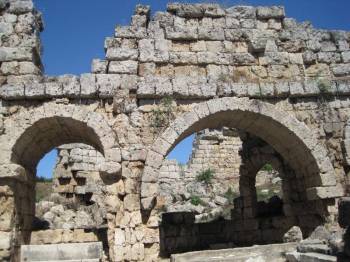 1D/0N
1D/0N
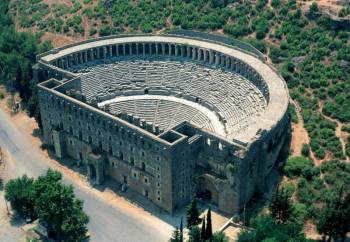 1D/0N
1D/0N
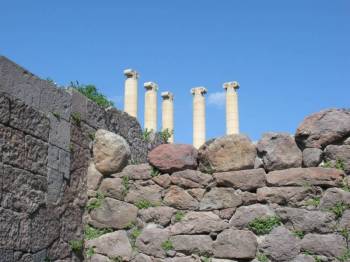 1D/0N
1D/0N
 1D/0N
1D/0N
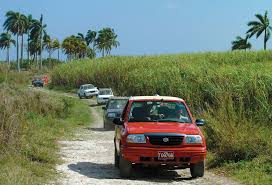 1D/0N
1D/0N
 1D/0N
1D/0N
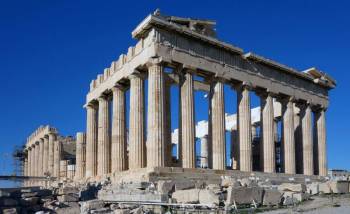 1D/0N
1D/0N
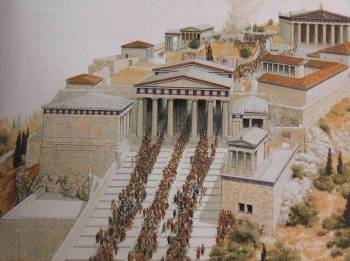 1D/0N
1D/0N
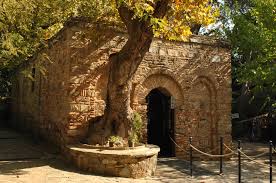 1D/0N
1D/0N
 13D/12N
13D/12N
Guwahati - Shillong - Tawang - Cherrapunji - Bomdila - Golaghat - Mandla
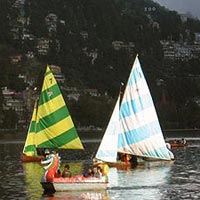 13D/12N
13D/12N
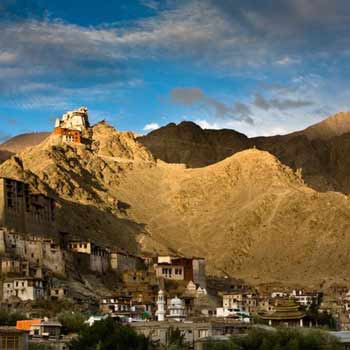 13D/12N
13D/12N
12 Night / 13 Days Haven Himachal Family..
Shimla - Sangla - Kalpa - Kinnaur - Manali - Dharamshala - Dalhousie - Amritsar
 13D/12N
13D/12N
 13D/12N
13D/12N
Shimla - Kulu - Manali - Dharmshala - Da..
Shimla - Manali - Dalhousie - Amritsar - Dharamshala - Kulu
 13D/12N
13D/12N
Rajasthan 12 Nights 13 Days Tour
Bikaner - Jaisalmer - Jodhpur - Mount Abu - Chittorgarh - Pushkar - Jaipur - Udaipur
 13D/12N
13D/12N
Agra - Jaipur - Jodhpur - Jaisalmer - New Delhi - Udaipur
 13D/12N
13D/12N
Golden Triangle Tour with Khajuraho
New Delhi - Jaipur - Fatehpur Sikri - Agra - Jhansi - Orchha - Khajuraho - Varanasi
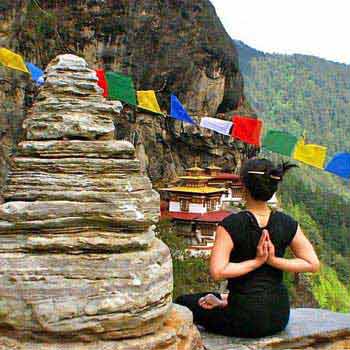 13D/12N
13D/12N
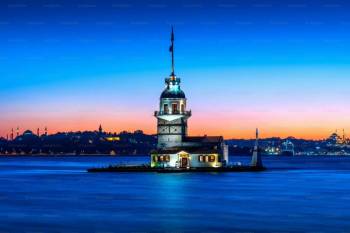 14D/13N
14D/13N
14D Turkish - Greek Odyssey Tour
Athens - Mykonos - Santorini - Istanbul - Ankara - Cappadocia - Izmir - Konya
 10D/9N
10D/9N
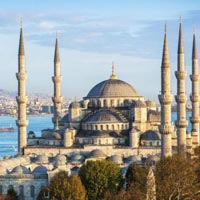 11D/10N
11D/10N
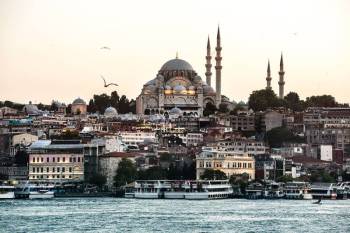 8D/7N
8D/7N
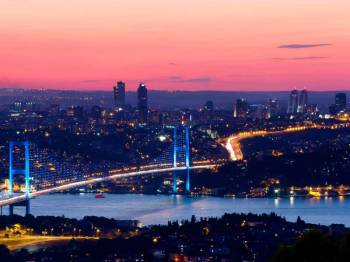 8D/7N
8D/7N
Istanbul - Canakkale - Kusadasi - Konya - Cappadocia - Malatya - Mardin
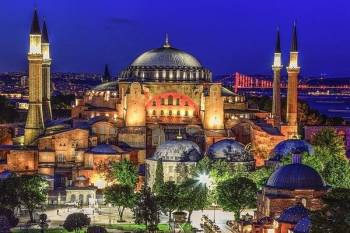 9D/8N
9D/8N
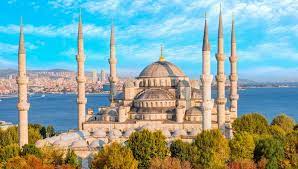 6D/5N
6D/5N
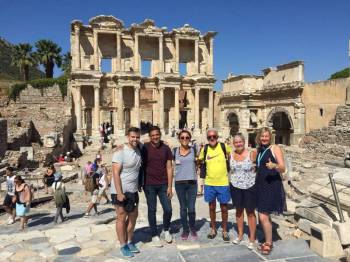 7D/6N
7D/6N
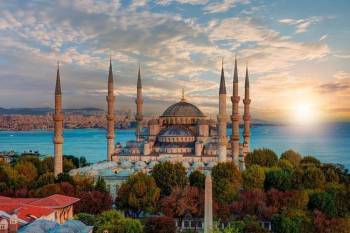 7D/6N
7D/6N